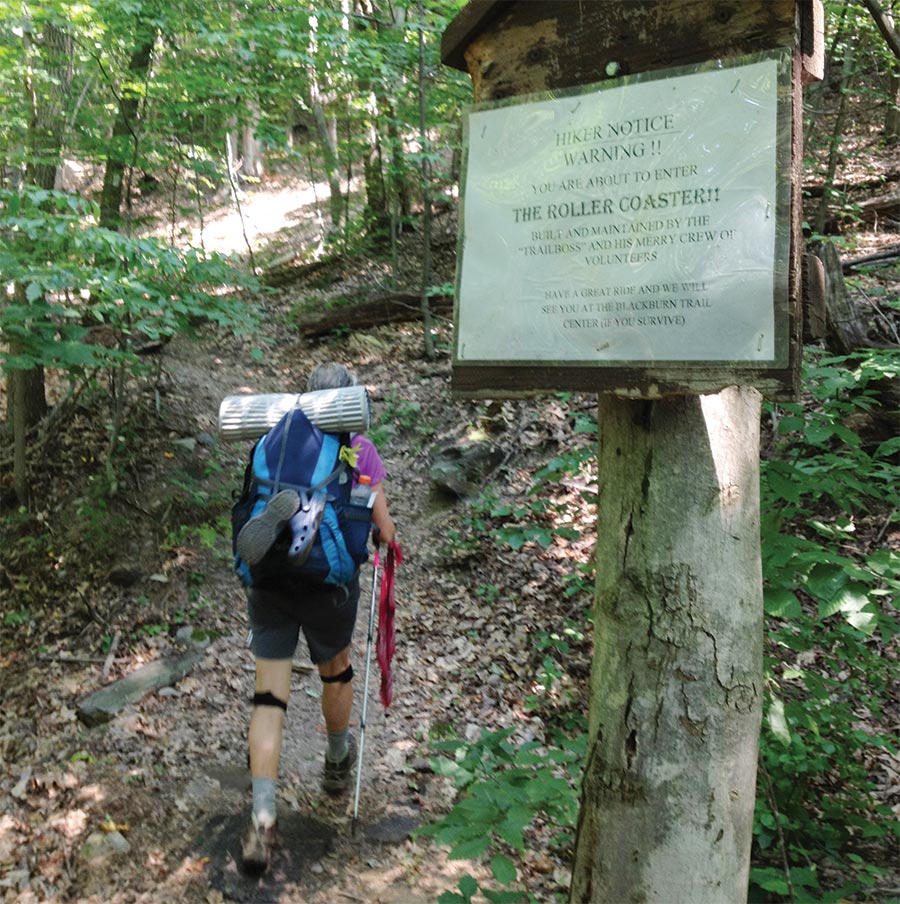Trail Stories

–By Christian Peterson
–By Christian Peterson
Typically, we didn’t check weather reports while we were hiking, largely because cell phone service was spotty, but Chris felt compelled to do so that evening. Thank goodness he did. “Mom, get in your tent now. A strong storm is headed toward us,” he said. “We have just a few minutes.” I had to think but there was no time, so I scrambled into my tent and heard Chris zip the fly over his hammock. What was he thinking? If it’s a severe storm, his hammock is defenseless. What was I thinking? My tent weighed less than four pounds and was equally inadequate in a storm of any magnitude. Then I heard it — like a freight train barreling up both sides of my tent. The wind was unbelievable, and the calmness of that once airless night was shattered by the sound of falling trees. Were they the ones Chris’ hammock was hooked to? And what could I do? Nothing, but hope and pray. So, I did.
The following morning brought intense sunshine and cooler, dryer air. Chris and I woke up at about 5:30. We had spent the night in deep slumber after checking on each other’s safety once the derecho had passed. We couldn’t even count the number of trees that had broken like matchsticks around our campsite. All I could think was: how did we manage to survive that? Was there a greater intervention? Did my desperate thoughts of how I would be more grateful if we survived prove to be the ingredient necessary to ensure our safety? I might never know why we survived but what I did know was that I would forever practice being grateful — because I was.
As we picked our way through downed trees — enough with white blazes that we could follow the Trail — we met volunteers who were clearing debris and checking on the safety of people like Chris and me who couldn’t find shelter in such an incredibly dangerous storm. I’ve thought about that a lot since that June; about those volunteers dedicated to maintaining this national treasure called the Appalachian Trail who, on that summer morning, were making sure those of us who ventured on it in were safe. It’s a life lesson I shall never forget.
Nine years later, I embrace my new relationship with the A.T., now in my sixth year as a volunteer on the Appalachian Trail Conservancy’s (ATC) Board of Directors, joining hundreds of others who share the mission of the ATC — to protect, manage, and advocate for the world’s most iconic footpath. My journey as a long-distance hiker allowed me to be an adventurer. Today, my role as a volunteer board member helps to ensure that others have the chance to experience the Appalachian Trail and to create their own adventures. And for that, I am grateful.